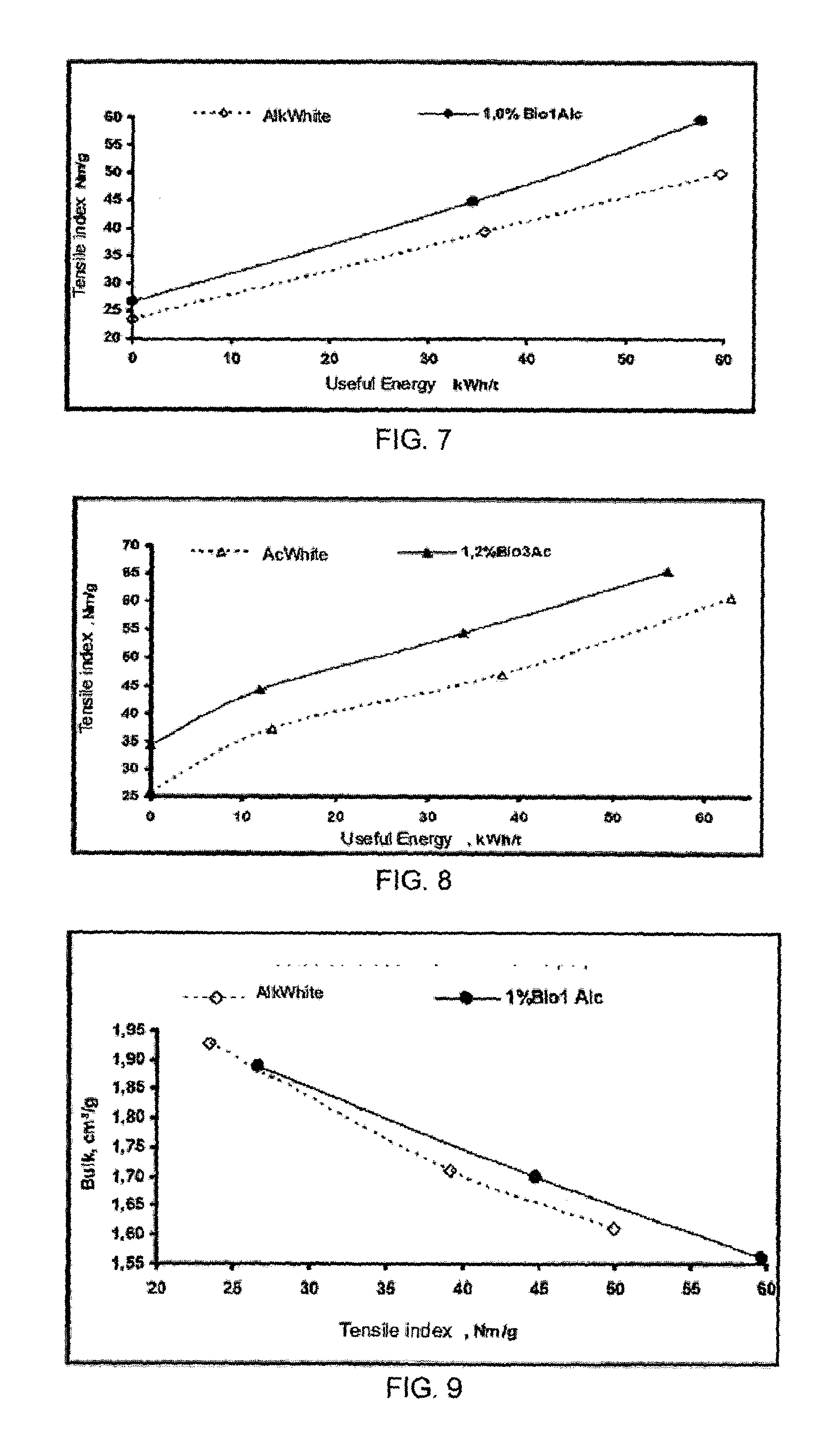Process for producing modified cellulose pulps, cellulose pulp thus obtained and use of biopolymer for producing cellulose pulps
- Summary
- Abstract
- Description
- Claims
- Application Information
AI Technical Summary
Benefits of technology
Problems solved by technology
Method used
Image
Examples
example 1
[0055]For a alkaline pulp treating process, it was used a biopolymer herein identified as “AlcBio1”, referring to a hybrid corn polysaccharide chemically modified by etherification in the following conditions: pH of 8.5 in aqueous suspension with 30% of solids concentration and a controlled temperature of 30° C., during a period of 8 hours. Its physical aspect corresponds to a fine white powder having a characteristic starch odor, insoluble in water and organic solvents. With regard to its chemical characterization, said biopolymer AlcBio1 has a degree of substitution of 0.025 to 0.045, hydrogenionic potential (pH) of 5.5 to 6.5 and maximum humidity of 14%.
example 2
[0056]For alkaline pulp treating process, it was used a biopolymer herein identified as “AlcBio2”, referring to a corn polysaccharide chemically modified by etherification in the following conditions: pH of 8.5 in aqueous suspension with 40% solids concentration and a controlled temperature of 40° C., during a period of 6 hours. Its physical aspect corresponds to a fine, white powder, insoluble in water and organic solvents. With regard to its chemical characterization, said biopolymer AlcBio2 has an amphoteric charge (positive and negative) with a degree of substitution of 0.025 to 0.042, hydrogenionic potential (pH) of 5.5 to 6.5 and maximum humidity of 14%.
example 3
[0057]For alkaline pulp treating process, it was used a biopolymer herein identified as “AlcBio3”, referring to a corn polysaccharide chemically modified by etherification in the following conditions: pH of 9.0, in aqueous suspension with 35% of solids concentration and a controlled temperature of 30° C., during a period of 8 hours. Its physical aspect corresponds to a fine white powder, insoluble in water and organic solvents. With regard to its chemical characterization, said biopolymer AlcBio3 has anionic charge, hydrogenionic potential (pH) of 5.5 to 6.5 and maximum humidity of 14%.
PUM
| Property | Measurement | Unit |
|---|---|---|
| temperature | aaaaa | aaaaa |
| temperature | aaaaa | aaaaa |
| temperature | aaaaa | aaaaa |
Abstract
Description
Claims
Application Information
 Login to View More
Login to View More - R&D
- Intellectual Property
- Life Sciences
- Materials
- Tech Scout
- Unparalleled Data Quality
- Higher Quality Content
- 60% Fewer Hallucinations
Browse by: Latest US Patents, China's latest patents, Technical Efficacy Thesaurus, Application Domain, Technology Topic, Popular Technical Reports.
© 2025 PatSnap. All rights reserved.Legal|Privacy policy|Modern Slavery Act Transparency Statement|Sitemap|About US| Contact US: help@patsnap.com



